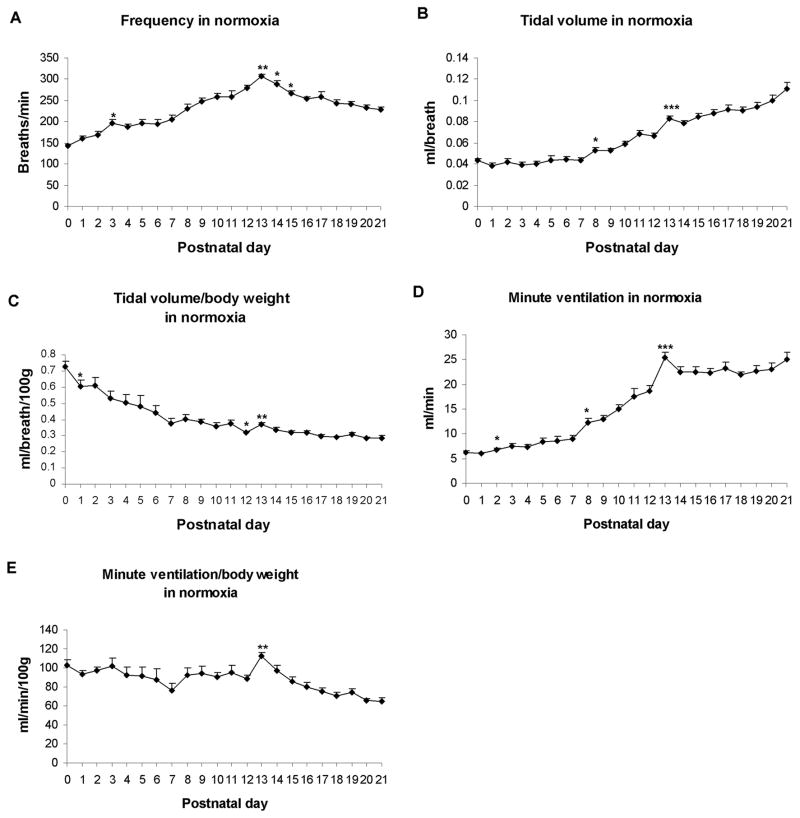Fig. 2.
Developmental trends of frequency (f) (A), tidal volume (VT) (B), and minute ventilation (V̇E) (D) during the first 3 postnatal weeks. In normoxia, all three trends increase significantly during the 2nd postnatal week, peaking at P13 (P < 0.001); after which, f values fall steadily until P21, whereas VT and V̇E values initially fall at P14 but rise again until P21. When VT is normalized to body weight (C), its trend decreases with age, with a significant reduction from P0 to P1, and from P11 to P12 (P < 0.05 for both). There is a significant increase at P13 (P < 0.01) followed by a relative plateau until a small rise at P21. The developmental trend of V̇E normalized to body weight (E) exhibits minor fluctuations from P0 to P12. There is a significant rise in V̇E at P13 (P < 0.01), followed by a gradual decrease thereafter. ANOVA within each parameter reveals significant differences among ages (P < 0.01). Statistical comparisons (Tukey's Studentized range test) between successive age groups: *P < 0.05; **P < 0.01; ***P < 0.001 (significance between one age group and its adjacent younger age group). (Modified from Liu and Wong-Riley, 2006).

